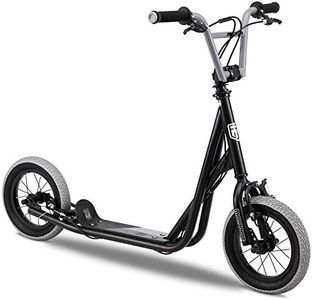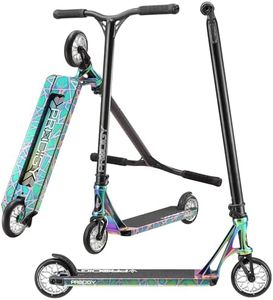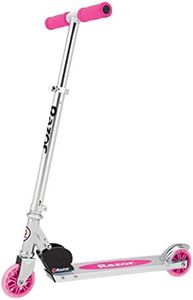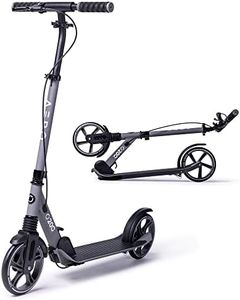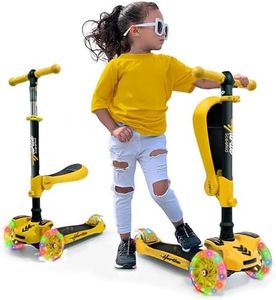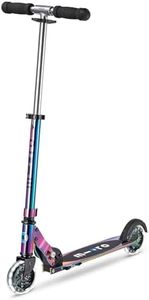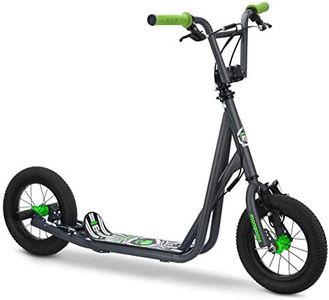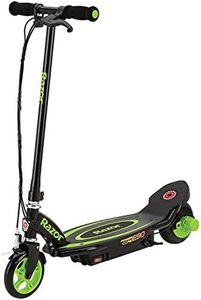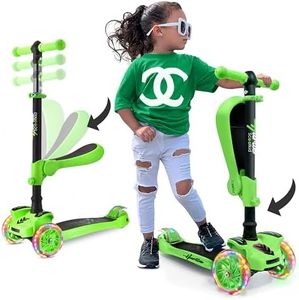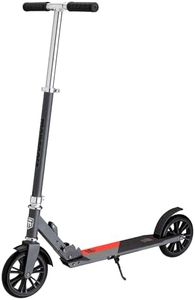We Use CookiesWe use cookies to enhance the security, performance,
functionality and for analytical and promotional activities. By continuing to browse this site you
are agreeing to our privacy policy
10 Best Scooters For 12 Year Olds
From leading brands and best sellers available on the web.Buying Guide for the Best Scooters For 12 Year Olds
When choosing a scooter for a 12-year-old, it's important to focus on both safety and enjoyment. Kids at this age want something fun, but a scooter should also be able to handle their growing size and offer a stable, secure ride. It's helpful to think about where the scooter will be used (park, street, commuting, tricks/skate park) and match the features to those needs. Focus on the right size, weight, and key features to ensure the scooter is comfortable, easy to control, and fits your child’s activities.Wheel SizeWheel size on a scooter determines how smooth the ride will be and how easy it is to navigate different surfaces. Smaller wheels (around 100mm) make scooters more agile and lighter, good for tricks or skate park use, but they may be bumpier on rough terrain. Medium wheels (110-120mm) are a good all-around choice, providing balance between agility and smooth rides, and are ideal for daily rides around the neighborhood. Larger wheels (125mm and above) roll more smoothly over cracks and uneven ground, making them best for longer rides or commutes. Consider your child’s usage: smaller wheels for stunts, midsize for versatility, and larger for comfort over distance.
Handlebar Height and AdjustabilityHandlebar height affects comfort, control, and safety. If the handlebars are too low or too high, your child can have trouble steering and may strain their back or arms. Adjustable handlebars are ideal for 12-year-olds, as kids grow quickly and preferences change. Generally, handlebars should sit at or just above the child’s waist when standing on the scooter. Look for models with easy-to-adjust handlebars to ensure a comfortable fit as your child grows.
Deck Size and MaterialThe deck is the platform the rider stands on, so its size and material impact stability and weight. Narrow and short decks make the scooter lighter and easier for tricks but may feel less stable for beginners. Wider and longer decks provide more space, making them great for comfort and longer rides. Materials like aluminum keep the scooter lightweight yet durable, while heavier decks may be sturdier but harder to carry around. Match the deck to your child’s balance and intended use – wider for comfort and stability, narrower for agility and tricks.
Weight LimitThe weight limit tells you the maximum load the scooter can safely hold. It’s crucial for both safety and durability. Scooters for younger kids may have lower limits (around 110-130 pounds), but 12-year-olds, who may weigh more, need higher capacity – often up to 180 pounds or more. Always check this specification and choose a scooter that well exceeds your child’s current weight to accommodate growth.
Brake TypeScooters typically have rear fender brakes (step-on brakes at the back), and some offer hand brakes. Rear fender brakes are simple and reliable, ideal for most kids and easy to maintain. Hand brakes may provide more control, especially at higher speeds, but they are less common on basic scooters. For most 12-year-olds, a rear brake is sufficient, but if your child is adventurous or rides fast downhill, consider the extra stopping power of a hand brake.
Folding MechanismA folding mechanism makes the scooter easier to store and carry, especially for kids who might take it on public transport or to school. Not all scooters fold – trick or stunt scooters usually don’t, as solid frames are needed for durability. If portability is important and your child just wants to ride around or commute, a foldable scooter adds convenience.
SuspensionSuspension helps absorb bumps from uneven ground, making the ride smoother and more comfortable. This isn’t necessary for most casual riders on smooth sidewalks, but it’s helpful if your child will ride on rougher streets or wants extra comfort. If your area has lots of cracks or uneven pavement, scooters with built-in suspension are worth considering; otherwise, standard models without suspension are lighter and more affordable.

